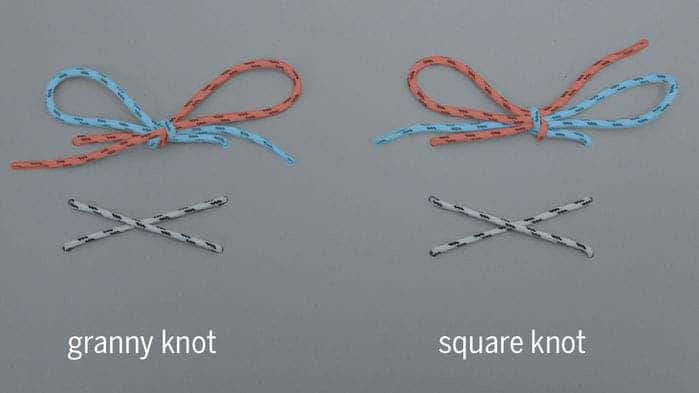
Some days are worse than others, like those days when your shoelaces constantly untie. Stopping in mid-stride to tie them, we often inevitably ponder why this seems to happen no matter how tightly we tie the knot. Now, finally has an official, peer-reviewed answer. According to researchers from the University of California Berkley, it’s inertia that whips the laces forward coupled with the stomping of the foot that causes the knot to loosen.
This interaction of forces typically triggers a ‘shoelace collapse’ in a matter of seconds, as the researchers noticed using high-speed cameras in a series of experiments. Because your foot strikes the surface of the ground at seven times the force of gravity, the knot stretches then relaxes in response. This motion gradually loosens the knot enabling inertial forces to act on the free ends of the laces. The whole process is not all that different from when you pull the free end of a bow tie to loosen it. Only this time it’s the inertial force of the leg swinging back and forth that causes the knot to loosen and not a person pulling on the free end.
To confirm the footage, the researchers added weights to the free end of the laces and saw the knots fail at higher rates as the inertial forces increased. Knot mechanics were tested with a variety of different laces which were swung with an impacting pendulum. These additional experiments confirmed that you need both the impulsing force at the base of the knot and the inertia that acts on the free ends for knot failure to occur. Tying a knot more tightly can help because more cycles of impact and leg swinging are required for the knot to fail.
“The interesting thing about this mechanism is that your laces can be fine for a really long time, and it’s not until you get one little bit of motion to cause loosening that starts this avalanche effect leading to knot failure,” said graduate student Christine Gregg, who also acted as a participant for the study by running on a treadmill while her colleagues film her shoes.
Oddly enough, the two most common types of shoelace bow tie knots fail in exactly the same way, despite one is structurally stronger than the other. The strong knot involves tying two lace crossing of opposite handedness on top of each other. In the weaker version, the two lace crossings have the same handedness which makes the knot twist instead of lying flat when tightened, the scientists reported in the Proceedings of the Royal Society.
“We are trying to understand knots from a mechanics perspective, such as why you can take two strands and connect them in a certain way that can be very strong, but another way of connecting them is very weak,” said Oliver O’Reilly, a Berkeley professor of mechanical engineering, whose lab conducted the research. “We were able to show that the weak knot will always fail and the strong knot will fail at a certain time scale, but we still do not understand why there’s a fundamental mechanical difference between those two knots.”

Beyond answering a life-long question that’s common among many people, the physics involved in untying shoelaces could have far greater implications. Knotted structures are found everywhere in nature like DNA or microstructures. These structures fail from dynamics forces too but some knots are better than others. Being able to predict when a knot is going to fail can have huge implications beyond shoelaces. Earlier this year, researchers from the University of Manchester tied the tightest knot in the world coiled around a strand of 192 atoms coiled around a triple loop which crosses itself eight times.


